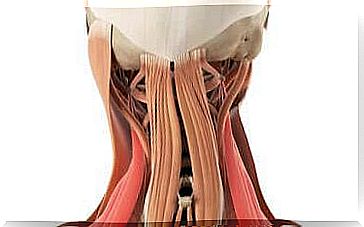The Erythrocyte Sedimentation Rate: What Is It?
Red blood cell sedimentation rate is a laboratory test used to confirm the presence of inflammatory and neoplastic diseases. Find out how it is done and when it can be prescribed.

Clinical laboratory tests are of great importance in medical practice. Sometimes this is even the only way to confirm the presence of a disease. One of the most common tests is the rate of erythrocyte sedimentation.
Also known as red blood cell sedimentation rate , VSG or ESR for its acronyms, this is a test that measures the rate at which red blood cells settle to the bottom of a test tube. A sedimentation rate higher or lower than normal indicates the presence of different pathologies.
Under normal conditions, erythrocytes or red blood cells have a negative charge, which causes them to repel each other, their sedimentation rate being 10 millimeters per hour. The latter may however vary depending on the subject of the study and his lifestyle.
Reasons for performing an ESR
The rate of erythrocyte sedimentation is a test that guides the specialist and may indicate the existence of disease. It can therefore be useful if there is one of these situations:
- Fever of unknown origin.
- Certain types of arthritis.
- Symptoms that affect the muscles.
However, the doctor will have to analyze the clinic presented by the patient, in addition to the results of the laboratory tests, in order to be able to give an adequate diagnosis. In addition, ESR can be used as an important diagnostic criterion for two diseases: rheumatoid arthritis and temporal arteritis (or Horton’s disease), both of which are very rare and appear in patients over 50 years of age.
Rheumatoid arthritis is an inflammatory disease that affects the proximal musculature of the lower and upper limbs as well as the torso, causing pain and limiting the person’s movement. Temporal arteritis causes headaches, reduced visual acuity, fever, jaw lameness and anemia.

How should I prepare for this test?
This is a fairly simple and quick exam: no special preparation will therefore be necessary. If only an erythrocyte sedimentation rate is achieved, fasting is not an essential condition; however, if other analyzes are carried out at the same time, the relevant action will need to be taken.
In order to perform this test, blood must be drawn from a vein with a syringe. This grip is done in the arm. You may therefore feel a little pain or discomfort during the examination, and this can sometimes last all day. However, it will not prevent the person from doing all of their daily activities.
The blood test is very simple and is usually done using the Westergren method: 2 ml of blood is mixed with 0.5 ml of citrate in a test tube and the distance without erythrocytes is measured. After an hour, we calculate again the distance in millimeters of the zone without red blood cells to know the speed at which they have descended.
Significance of a high erythrocyte sedimentation rate
When the sedimentation rate is above normal values, one should suspect the presence of pathologies linked to inflammation and certain neoplasms. According to studies, the level increases after 24 hours and does not return to normal values even after it resolves.
These types of pathologies increase the concentration of different proteins in the blood plasma. All of these proteins, especially fibrinogen, will affect the surface charge of red blood cells, causing them to drop more quickly.
However, several conditions that cause fibrinogen in the blood to increase, such as pregnancy, diabetes, or end-stage kidney disease, are able to increase the rate of erythrocyte sedimentation. Among the causes we can mention the following:
- Anemia.
- Macrocytosis.
- Acute bleeding.
- Acute myocardial infarction.
- Lymphoma.
- Metastatic carcinoma.
Significance of a low erythrocyte sedimentation rate
Most of the time, a low sedimentation rate is of no particular medical importance. This speed may even be 0 mm in normal patients, so this is not a cause for concern for specialists.
Nevertheless, a low erythrocyte sedimentation rate (between 0 and 3 mm) is associated with various health problems, among which we can highlight:
- Polycythemia or large amount of red blood cells.
- Deformities in red blood cells.
- Hyperviscosity syndromes.
- Smoking habits.
- Heart failure.
As if that weren’t enough, infectious diseases like dengue can cause a slight drop in the rate of sedimentation. This fact was demonstrated by a study in which the ESR of patients with this condition was very low compared to others with acute febrile syndromes.

A simple but effective test
As you can see, the rate of erythrocyte sedimentation is not a complex examination. However, it is useful when looking for the presence of diseases related to inflammation. This rate can guide the doctor and help him make the correct diagnosis.
As far as the patient is concerned, no special preparation is required to perform this test. After the exam, he will be able to continue with his daily activities without any inconvenience.









